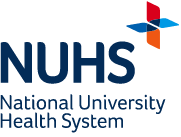Leukaemia is cancer of the blood cells. It starts in the bone marrow, where blood cells are made. It causes an uncontrolled production of abnormal white blood cells, called Leukaemia cells. These cells do not function normally and over time, they crowd out the normal blood cells and usually lead to anaemia, bleeding and infections.
Leukaemia is usually grouped into either chronic (condition gets worse slowly) or acute (condition gets worse quickly). It can be further sub-grouped into the following:
Acute Leukaemia
Acute Myelogenous Leukaemia (AML)
AML is an aggressive type of Leukaemia in which there are too many immature myeloid cells (myeloid blasts) in the blood and bone marrow. AML is the most common type of Leukaemia.
Pre-chemotherapy work-up for AML would include a number of blood tests and heart scan. These are essential to determine the suitability of the patient for intensive chemotherapy. A central venous line will be inserted via a vein on the arm to facilitate delivery of chemotherapy and other intravenous medication. It also spares the patient from repeated venupunctures for the purpose of blood tests. Generally, the treatment consists of one to two cycles of induction chemotherapy followed by consolidation therapy.
The chemotherapy process consists of one to two types of chemotherapeutic agents such as cytarabine, idarubicin or daunorubicin. After induction chemotherapy, reassessment of the bone marrow will be carried out to confirm the remission status. The consolidation therapy can be further broken down into three cycles of chemotherapy (for standard risk or favorable risk patients), or allogeneic stem cell transplant (for high risk patients). Thereafter, the patient will be reviewed regularly in the clinic.
Acute Lymphocytic Leukaemia (ALL)
ALL is a fast-growing type of Leukaemia whereby there are too many immature lymphoid cells (lymphoid blasts) in the blood and bone marrow. ALL is the most common type of Leukaemia in young children.
The pre-chemotherapy work-up is the same as per AML. Younger adults (below 30 years old) will be offered a paediatric-inspired protocol. Those above 30 years old will be offered the standard adult protocol for ALL (HyperCVAD Protocol). Risk stratification of ALL based on genetic and MRD (residual disease) studies will help determine the high risk group for eventual allogeneic stem cell transplant. Those with standard risk disease will be offered consolidation chemotherapy followed by maintenance therapy. Thereafter, patients will be monitored regularly in the clinic.
Chronic Leukaemia
Chronic Myeloid Leukaemia (CML)
CML is another slow-growing type of Leukaemia in which too many myeloid cells are produced. Leukaemic blasts only make up a small percentage of this cancer type and CML mainly affects adults
The pre-treatment work-up for CML is much simpler, comprising mainly of a few blood tests to assess the functionality of the organs. The main therapeutic agent is oral tyrosine kinase inhibitor (TKI) which is a targeted therapy. Almost all patients will respond to this treatment. All patients will undergo bone marrow assessment at 3 months, 6 months and 12 months. The TKI will be continued indefinitely. Patients should be on long term follow-up for continuous monitoring of disease progression.
Chronic Myelomonocytic Leukaemia (CMML)
CMML is a type of Leukaemia in which there are too many monocytes (white blood cells) in the blood. There are two types of CMML – type 1 and type 2.
- Type 1 - Fewer than 5 out of every 100 white blood cells (5%) in your blood are abnormal myeloid cells (blasts)
- Type 2 - Between 5 out of every 100 white blood cells (5%), and 20 out of every 100 cells (20%) are abnormal myeloid cells (blasts)
Other forms of Chronic Leukaemia which are considered rare include:
- Chronic Eosinophilic Leukaemia
- Chronic Neutorphilic Leukaemia
- Atypical Chronic Myeloid Leukaemia
- Mast Cell Leukaemia
The different types of Leukaemia will in turn determine the symptoms and ultimately the treatment prescribed.

















